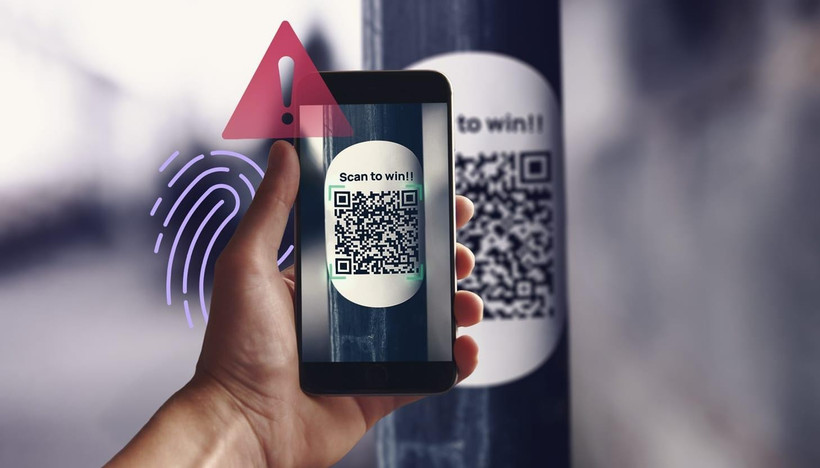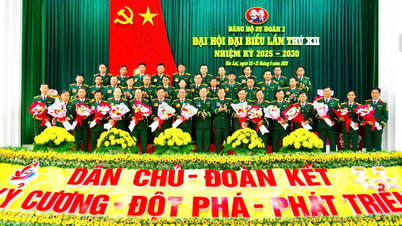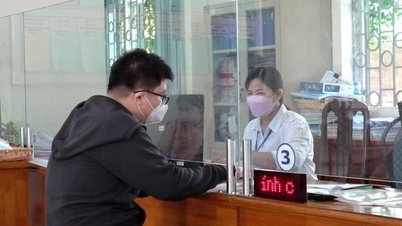From a convenient payment method, QR codes are gradually becoming a “trap” set by scammers. “Quishing” - a combination of “QR code” and “phishing” - is a form of fraud that uses malicious QR codes to lure victims to fake websites, install malware or make unwanted transactions.

Common “Quishing” techniques used by subjects:
QR codes in phishing emails and messages: Impersonating reputable organizations and sending messages that lead to websites that steal login information or request money transfers.
Fake QR codes in public places: Overwrite or replace payment QR codes, information at restaurants, bus stations... with QR codes of other subjects to steal money when users pay.
QR code man-in-the-middle attack: Interferes with the scanning process, redirecting the user through a data-collecting website before reaching the real page.
QR codes on counterfeit products and documents: Printing QR codes of objects on counterfeit goods, virtual lottery tickets, fraudulent documents to lure users to visit dangerous websites or provide personal information.
The above tricks can cause victims to face many serious consequences, such as: Theft of personal information: Leaking of names, addresses, phone numbers, emails, social network accounts; loss of money in accounts: Bank information, credit cards are stolen and illegal transactions are made; devices infected with malware: Spyware, viruses, data locks are installed for ransom; becoming victims of other forms of fraud: Stolen personal information can be used for more nefarious purposes.
According to information from the police, the nature of QR codes is not direct malware but only an intermediary to transmit content. Whether users are attacked or not depends on how the content is processed after scanning the QR code.
Users need to be extremely vigilant with requests to scan QR codes or access strange links, always pay attention to carefully checking the information after scanning the code and be especially vigilant with QR codes posted or shared in public places.
To contribute to preventing, stopping and effectively combating this type of crime, the cyber security and high-tech crime prevention force recommends that people should:
Double-check before scanning a QR code: Always verify the origin and validity of a QR code, especially with unfamiliar or overlapping codes.
Carefully observe your surroundings: At the payment point, check to make sure the QR code has not been tampered with.
Beware of unusual offers: Avoid scanning QR codes with overly attractive promotions.
Review the URL carefully after scanning: Make sure the web address starts with "https://" and is the correct domain name for your organization.
Use a safe barcode scanning app: Consider using an app that warns of malicious links.
Update security software: Make sure your device is protected by the latest anti-virus software.
Limit sharing of personal information: Be careful when providing information after scanning a QR code.
Report signs of fraud: Immediately notify the authorities if you suspect fraud.
In addition, each citizen needs to be vigilant and equipped with knowledge to protect themselves and those around them; always check before scanning any QR code.
In a digital world full of conveniences, users' alertness and caution are the first line of defense against increasingly sophisticated scams.
Source: https://baolaocai.vn/bung-phat-lua-dao-mang-ten-quishing-post403640.html

























































![[Maritime News] Wan Hai Lines invests $150 million to buy 48,000 containers](https://vphoto.vietnam.vn/thumb/402x226/vietnam/resource/IMAGE/2025/6/20/c945a62aff624b4bb5c25e67e9bcc1cb)











![[Infographic] Party Committee of the Ministry of Culture, Sports and Tourism: Marks of the 2020 - 2025 term](https://vphoto.vietnam.vn/thumb/402x226/vietnam/resource/IMAGE/2025/6/22/058c9f95a9a54fcab13153cddc34435e)


























Comment (0)